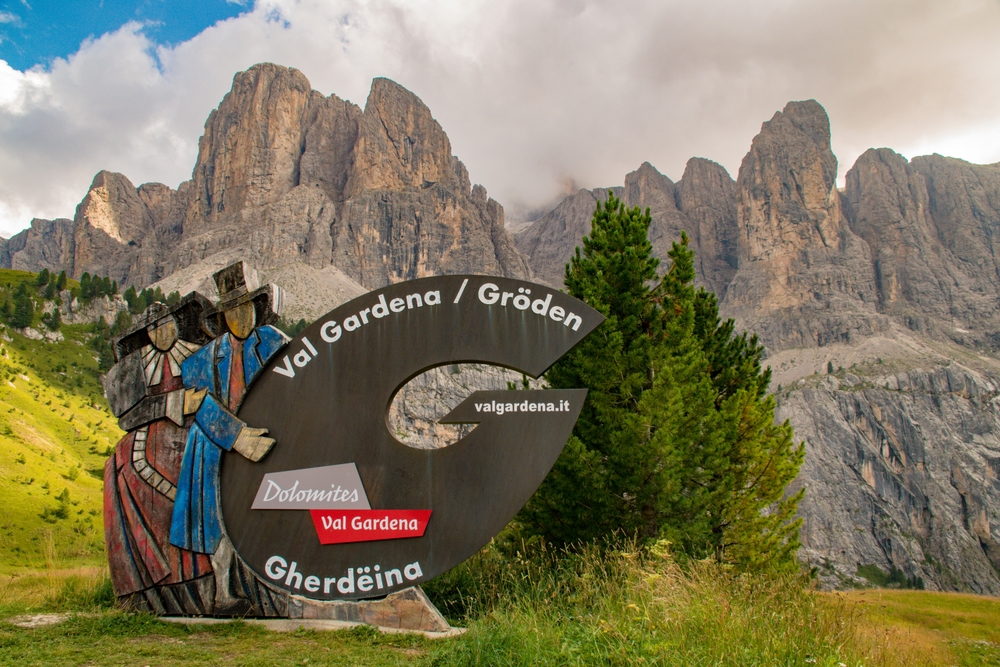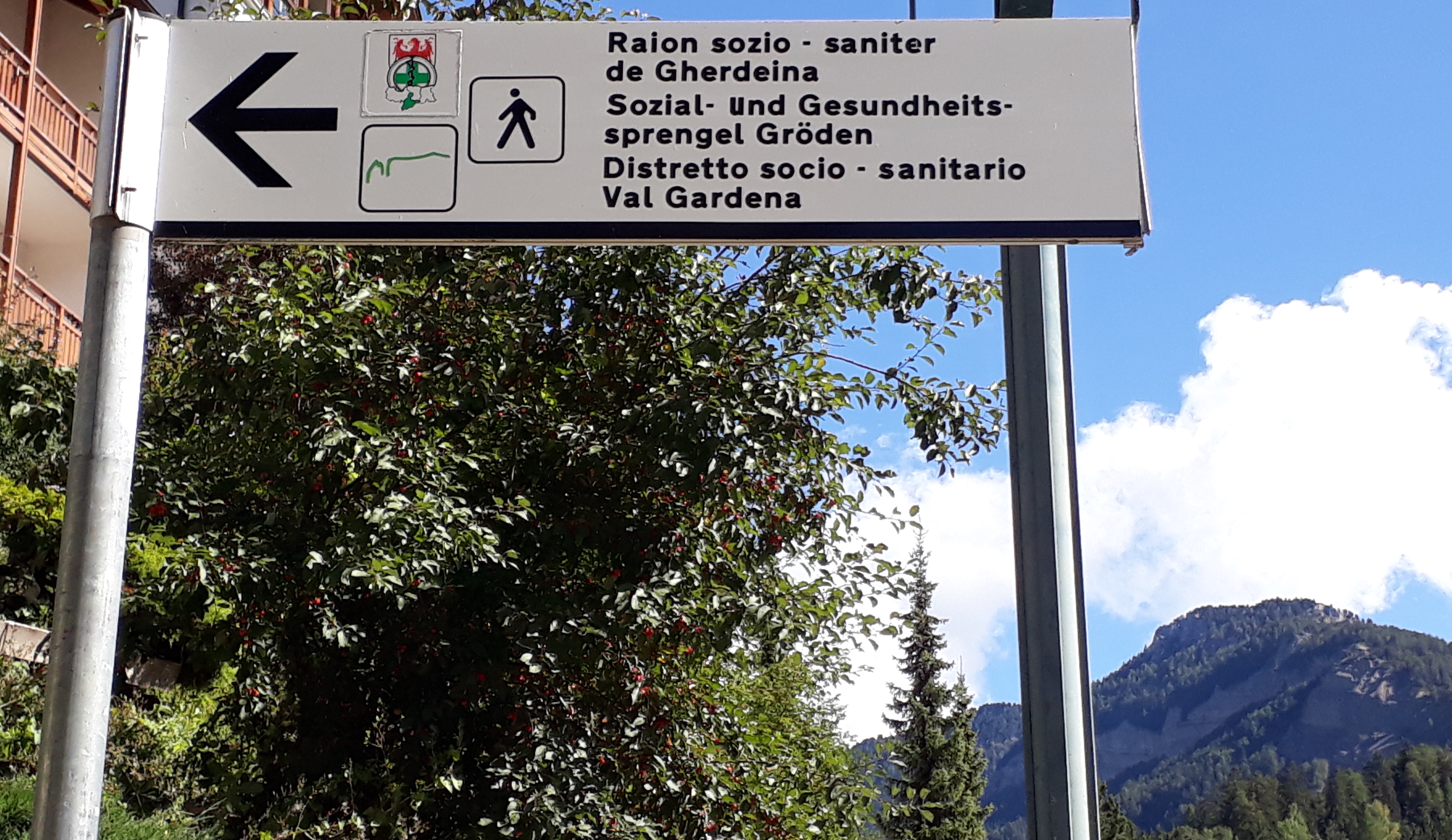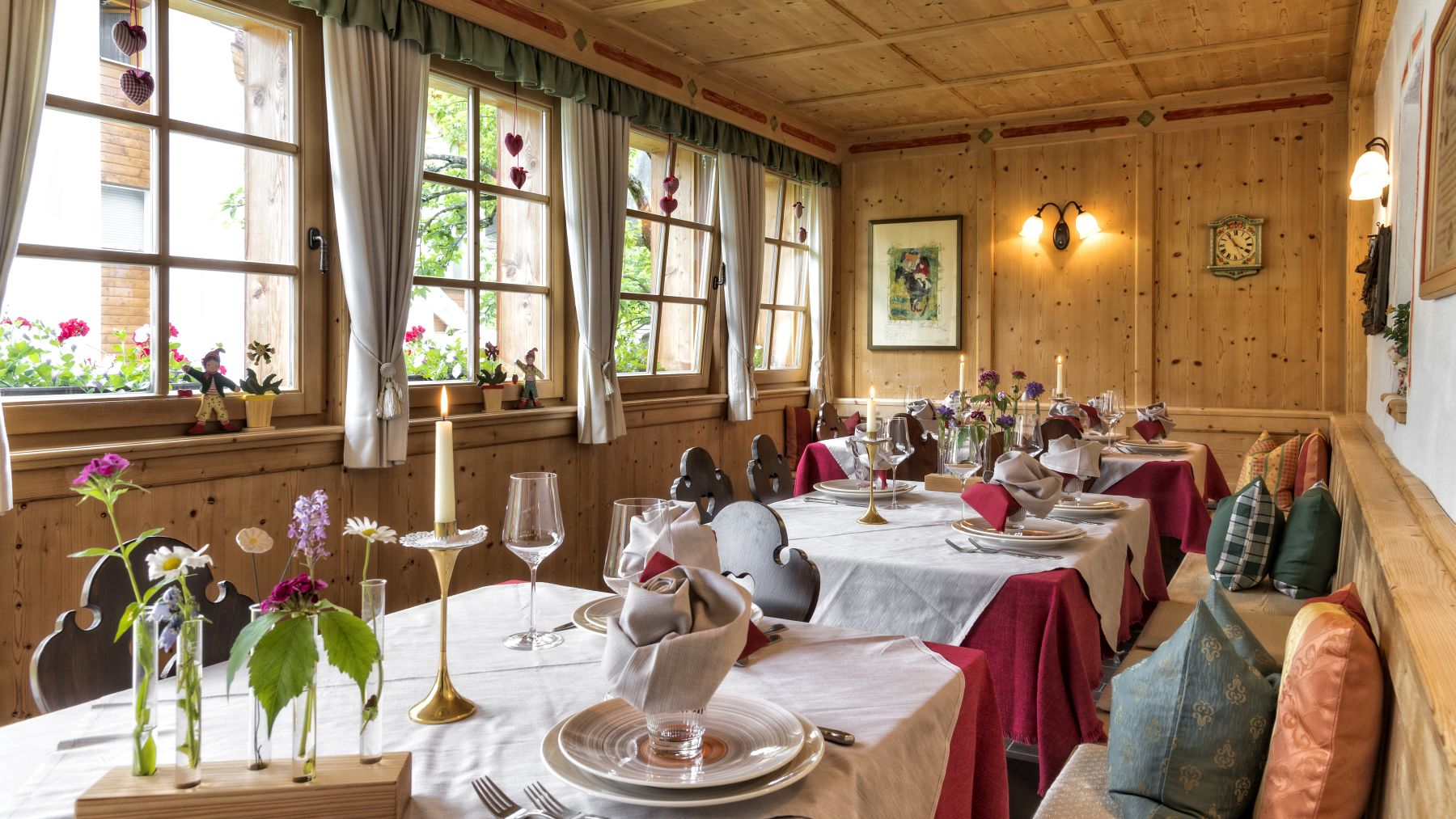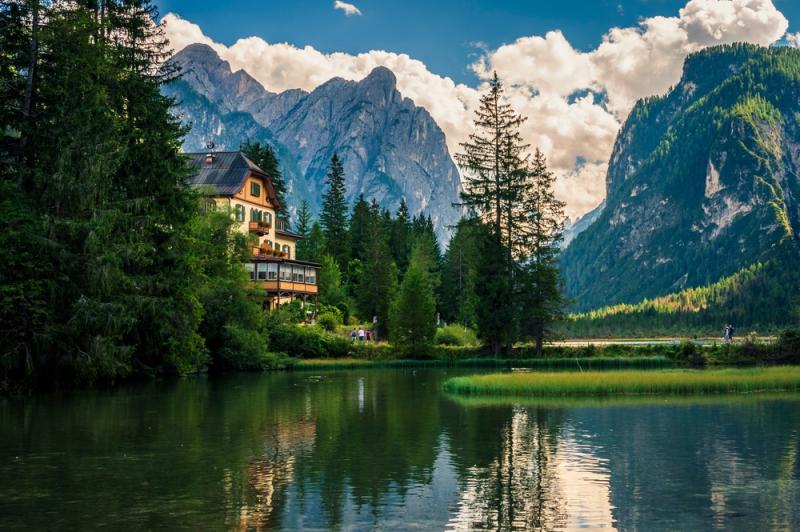“Willkommen. Benvenuti. Welcome.”
These are the three familiar greetings written on the sign at Parco Cervi, deep and high in Italy’s Dolomite region. Yet towering above them all in bold, capital letters is an enigmatic fourth phrase:
“BËGNODÜS!” it practically screams. “TL PARCH DI CERF TL ALTA BADIA!”
Keen linguists might recognize it as a Romance language, and those familiar with Italian can likely infer its meaning.
But few outside the region will have heard of Ladin, one of the rarest languages in Europe, spoken by around 30,000 people across five Dolomite valleys — Fassa, Gardena, Badia, Ampezzo and Livinallongo — that encircle the jagged Sella massif on the borders of Trentino-Alto Adige and Veneto.
But Ladin is more than just a language; it is a vital link to the history, culture and identity of the Dolomites. For the Ladins themselves, it represents a unique bond to their land and ancestors. This World Language Day (February 21), that bond is worth digging into.
Who are the Ladins and what makes their language special?

Ladin traces its roots to Rhaetian, the language spoken by the indigenous inhabitants of the Dolomites — and about whom very little is known. In 15 BCE, the Romans began settling in the Alps and their everyday language, Vulgar Latin, gradually merged with Rhaetian, creating the foundation of today’s Ladin language. Once spoken across a vast expanse of the central Alps, the language gradually faded into the background under the pressures of Italian and German, surviving today in just five Dolomite valleys.
Geographic isolation played a crucial role in shaping Ladin, preserving both archaic Latin grammar and remnants of the original Rhaetian lexicon. From Latin, Ladin retains final -s for plurals and second-person verb endings. For example, the words for “star” and “stars” (Italian: stella and stelle) in Ladin become stëra and stëres, closely resembling the Latin (stella and stellas). Similarly, the verb “you wash” (Italian: lavi and lavate) appears in Ladin as laves and lavëis, mirroring Latin’s lavas and lavatis.
From Rhaetian, Ladin preserves unique vocabulary with no cognates in any other language. These are words such as aiscöda (spring) and dlasena (blackberry) and they are some of the last vestiges of the ancient Rhaetian language.
Ladin shares some mutual intelligibility with Romansh (spoken in southeastern Switzerland) and Friulian (spoken in Italy’s Friuli Venezia Giulia region), leading some linguists to classify them within a broader Rhaeto-Romance language family. While Ladin also bears similarities to Italian dialects spoken in neighboring Trentino and Veneto, it is a language largely because its speakers say it is. And its speakers say it is because they see themselves as a nation apart from the Italians. They see themselves as Ladins.
The history of Ladin life
A Ladin national consciousness began to take shape in the 19th century when the language was first codified by Micurà de Rü, a priest from Val Badia. Beyond language, Ladins share a rich history, mythology and culture, as well as a deep attachment to their land — all of it shaped by centuries of isolation from the rest of the world.
However, Ladin has faced significant challenges. Under Fascist rule in Italy, it was considered a corrupted form of Italian and banned in public. When Nazi Germany occupied the region in 1943, they considered Ladins to be Italianized Germans and forced them to speak only German.
Despite these pressures, the post-war period saw a Ladin renaissance. The autonomy statute granted to Trentino-Alto Adige allowed Ladins to assert their cultural and linguistic rights by making Ladin an official medium of instruction in schools and fostering cultural institutions, newspapers, radio stations and even RAI Ladinia — a subset of the Italian state broadcaster — which screens two hours of Ladin TV a week.
Another major factor in Ladin resilience has been the post-war tourism boom, which transformed the Dolomites from a harsh, impoverished land into one of Italy’s most prosperous regions. Today, the area attracts visitors from around the world and the Ladins have capitalized on this, developing high-end accommodation and a tourism industry with prices that rival those of five-star hotels in central Milan. Economic opportunities in the region have encouraged young people to remain in their villages, ensuring the language continues to be spoken and passed down to future generations.
Among the Ladins you may have heard of are musician Giorgio Moroder, artist Gilbert Prousch (the Gilbert from Gilbert & George) and Winter Olympians Carolina and Isolde Kostner.
What is the situation of Ladin today?

The fact that the Ladin-speaking area is fragmented across three provinces, each with its own approach to language policy, has made it difficult to establish a unified organization for Ladin speakers. The strongest protections are found in Alto Adige (the Italian name for South Tyrol, the portion of the wider Trentino-Alto Adige region that comprises the Bolzano province). Ladin is the official medium of instruction in areas like the Val Badia and Val Gardena, and 4% of public sector jobs are reserved for Ladins.
In Trentino (the portion of the Trentino-Alto Adige region that contains the Trento province), some schools in Val di Fassa use Ladin alongside Italian, though language rights are not as extensive as they are in Alto Adige. Meanwhile, in Veneto — home to the Ladin valleys of Livinallongo and Ampezzo, including the renowned ski resort of Cortina — there are no special provisions for Ladin speakers.
But Ladin is not considered an endangered language; it has an active social and cultural life all its own. In addition to Ladin schools, there are newspapers, TV shows, theatres, bands, literature and even church services in the language. Ultimately, it is the deep-rooted pride of the Ladin people in their heritage and identity that ensures their language is not only surviving but thriving.
How can I immerse myself in Ladin culture while in the Dolomites?

While Ladin culture is present across all five valleys where the language is spoken, it is most prominent in Val Badia and Val Gardena in Alto Adige. Here, trilingual signage is the norm and Ladin is an integral part of daily life, spoken by nearly everyone. A simple swap of buongiorno to bun de is sure to earn a warm smile from the locals.
For a deeper dive into Ladin heritage, visit the village of San Martino in Badia, where the Ladin Museum chronicles the fascinating history of the Ladin people. The Istitut Ladin Micurá de Rü is also located here and offers courses in the Ladin language. In Ortisei, stop by the Union Generela di Ladins dla Dolomites and pick up a copy of La Usc di Ladins, the weekly Ladin newspaper.
Ladin cuisine is simple and hearty, sharing many staples with the broader culinary traditions of Trentino-Alto Adige. One of the most iconic treats in the Ladin valleys is crafons (Ladin for krapfen), a type of donut that can be filled with anything from minced meat to marmalade. Another specialty is tutres, crispy fried pastries stuffed with spinach and ricotta. For an authentic taste of Ladin flavors, dining at Fana Ladina, a restaurant with overnight accommodation in San Vigilio di Marebbe, is a must — it’s widely regarded as the premier destination for Ladin cuisine.
